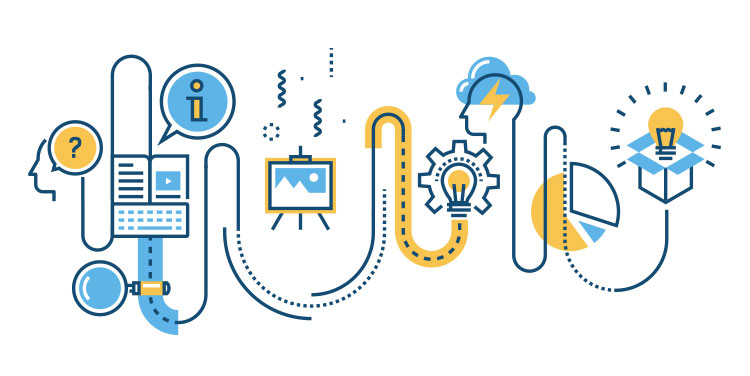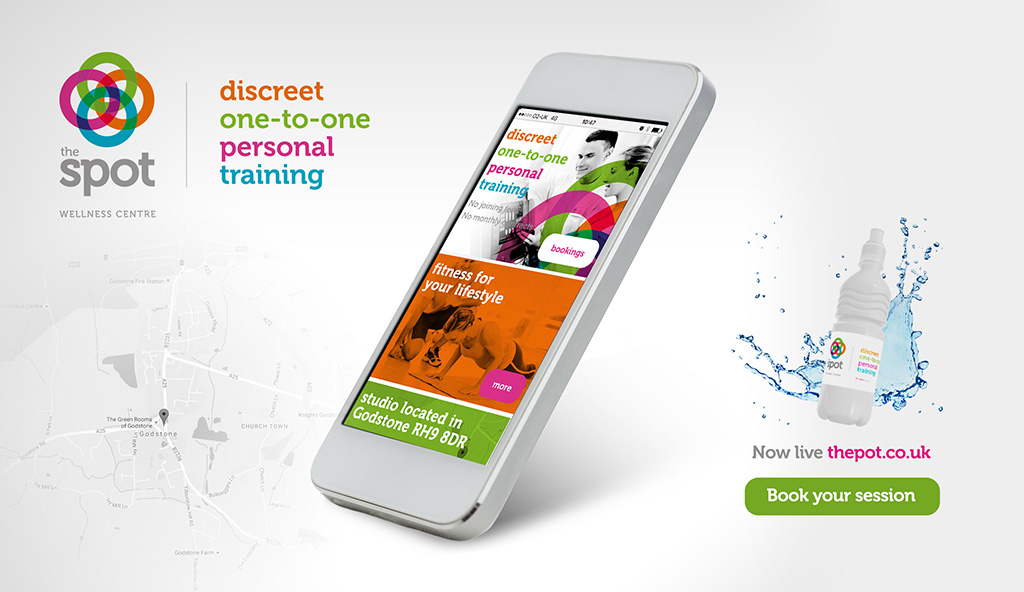Whether it's for a website, app or another digital touchpoint, such as social or even Remarketing Ads, clients need their brand to work across the latest digital technologies, but are they
prepared for the cost associated with such a feat? Do they understand the level of work and time required to create and develop a cross-platform brand?
What does cross-platform or cross-media actually mean?
Cross-platform is easy to say, but not all designers can achieve it. Cross-platform is everything from advertising and print, to web and digital, onscreen & offscreen. A designer's job when fulfilling a brand solution is to ensure that brand takes on a consistent style and message that can be interpreted across all platforms.
Think of a giant poster with a logo on it, will this same logo work as your Twitter icon? When creating a video or an animated online experience, will the same messaging work within print or on a brochure? Any media, application or platform where your brand appears is labelled "brand touchpoints." Cross platform brand touchpoints are where your audience interact with your brand.
Cross-platform and brand touchpoints aren't just fancy words designers use to create fear in their customers eyes. In fact, for a designer to talk about your brand being cross-platform shows that they know what they're doing.
This said, it can pose some interesting challenges and test the tightest client working relationships. Ultimately, you're going to need to invest more as the time required to create a cross-platform brand that stands out, is huge.
How does a brand stand out from the crowd? How
do you retain control and consistency? How do you design for multiple devices and experiences? How do you future-proof a brand?
Some of these questions are not easy to answer; projects and budgets evolve, as to does
the web, but largely, digital branding? needs to be planned, strategised and created through a well executed process and with a significant investment.
How do we deal with branding within a changing digital world?
You brand touchpoints
Ensuring brands work in a digital context is no longer a choice, it’s a
necessity. Brands have to work across all touchpoints, print and digital, because digital is
part of our everyday lives. As designers, we must ensure that the brand works
across all platforms, whether it be for print, web, apps or media.
Brand and its scalability
One of the biggest challenges designers face when they first embrace digital
is the relinquishment of full control. The media is no longer a fixed
dimension and you have to address this head on. Digital means multiple
devices with varying screen sizes. Your brand logo must scale without
losing clarity and your brand as a whole should retain consistency and
familiarity.
Now we're in the days of web browsers supporting SVG (scalable vector graphic), it's become much easier to create a brand logo
that retains absolutely quality and scalability without loss of clarity.
Consider your brand's Domain name or web address
It sounds like a simple aspect, but whether to integrate a web address (URL)
into your brand logo is vital to consider at the start of each branding
project. So, should the URL be included as part of the logo or not? There’s
no right or wrong answer, every brand is different and it all depends upon
the objective, but this question should always be addressed early on in
the project.
Today, there are a multitude of domains available, from .net to .org, .london to .agency.
Some are more popular than others, but consider the appeal in the future and snap them up now if they're part of your brand strategy.
A Logo is a small part of your overall company brand
Branding is everything your company offers, and it affects how it
behaves, both internally with staff and externally with customers. Your brand
distinguishes you from the competition and allows you to portray the ethos and vision of your business.
The starting point for any brand is to create and define its identity. Usually starting with a logo, colour palette and typeface
Leading on to brand guidelines, image and content tone.
What is branding? –Tell me more
Brand icon, brand logo or both?
In this modern age of digital application, you have to consider what the
difference is between an app icon and a logo. Are they one and the same?
No, they are two different things that are created to form part of a brand identity.
Think Social, think about the small space you'll have to display your logo. Will it fit? Can you adapt your existing logo to make it fit? Will it retain consistency, for which is the
most important thing about branding. Consistency.

How much does a brand logo design cost?
Research using Google images
With startup business increasing, so to do the number of logos striving
for attention. So, the question arises: how do you create a logo that is
unique?
This answer depends on the designer and his/her processes as well as their level of creativity.
One method I use, once I've experimented with concept design, is to create a JPG of each design and run it through
Google’s image search. This way I can see whether there are competitors or other companies out there with similar designs.
Imagine, you've paid for a logo design only to find out that the same design is used for a similar company, or worse yet, something offensive.
Make the brand logo memorable
Your brand should have a distinctive, clear and consistent visual identity,
one that is instantly recognisable, memorable and one that jumps out from competitors saying “I am what you desire.”
Check out this branding project for its uniqueness and memorability…

View the project here
Brand designers work harder than ever before
Customers are becoming more demanding and to amplify the problem, their knowledge of a logo and a brand, is skewed.
A designer has to spend considerable time explaining the difference between a logo and brand, arguing over budget and solution.
And as such, the initial budget constrains the brand development process, making it hard for designers to create truly remarkable solutions that scale across brand touchpoints.
Ultimately the customer receives a logo that is below par, one they don't like and one that doesn't meet the audiences expectations.
Consistency is key
I cannot stress this enough and it frustrates me that designers have no control over what they're producing, or even, they don't know how to design a brand with control in mind.
Capturing attention is one of the main challenges of working across digital
platforms. One simple way to make this recognition loyalty stick is consistency.
A logo drives brand-recognition across touchpoints so consistency is
key, from colour to typefaces, imagery to tone. It’s imperative to maintain consistency in
order to create memorability and cement customer loyalty.
A designers job, whilst the need to be creative and original is important, is to lead the way with the brand. Enforce rules, structure and produce guidelines.
Often simplicity is best
Designers have in the past and will still generate a multitude of concepts before showing the
client. I don't like this approach and prefer to work up only one, two or three solid concepts that
are right for the audience, not the customer.
Often, selected concepts will be simplified to become clearer and more
distinguished – and importantly, for them to work on digital touchpoints. Many times have a created a brand only to revisit it over and over, refining it and simplifying it.
I think that sometimes brands can be overcomplicated, overthought, but there's a balance. Of course, as a brand designer you're always battling with an endless pot of creativity, and a customers budget to work within!
Whether you're a designer or entrepreneur reading this article, good luck and enjoy the branding journey. Maybe hit me up on LinkedIn and we connect if you'd like some brand advice.
CreateYourBrand™
Does your business or product need to be repositioned? Or are you a startup that needs a new and complete branding package? I have just the product solution for you…
Discover more